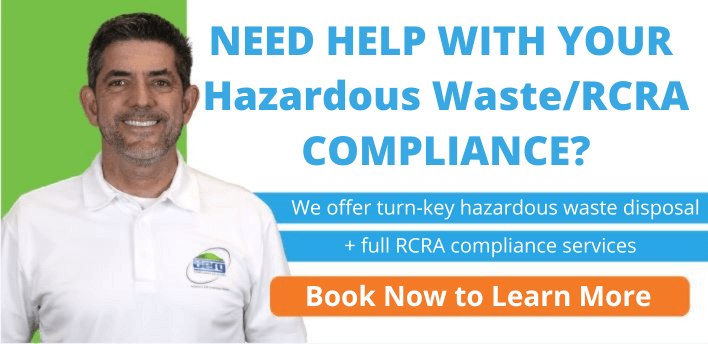This blog post will discuss and summarize the #2 Hazardous Waste Violation in Texas
All Texas manufacturers, big and small, generate industrial wastes. These wastes can include simple “plant trash” (paper, plastic and cardboard), recyclable wastes such as scrap metal, batteries, spent bulbs and in many cases, hazardous wastes such as spent paints, solvents, acids, bases or solids contaminated with hazardous substances.
In Texas. all manufacturing facility wastes, even plant trash, are considered “industrial wastes” and are therefore must be accounted for and characterized using TCEQ’s “Waste Determination” process. This regulation triggers regardless of a manufacturers’ generator status (CESQ, SQG and LQG).
Waste Determination Process
This process requires that companies first identify all of the various industrial waste streams that they generate, and then go about the process of classifying and characterizing each waste appropriately.
In Texas, Industrial Wastes can be broken down into 3 major categories: Class 2, Class 1, and Hazardous. Class 2 is the least harmful, then Class 1 and finally Hazardous (which is the most potentially harmful to human life and the environment).
To give you a better idea of what we’re talking about, Class 2 wastes include things like paper, plastic and cardboard, and are generally sent to the local landfill for disposal.
Class 1 wastes are typically generated by manufacturing processes, but aren’t actually “hazardous” in nature (more on this in a moment). Class 1 wastes can include things like latex paint, filters, gloves contaminated with non hazardous chemicals, or filter cake. These wastes are typically disposed of in special “Class 1 Landfills” that are more regulated than standard landfills, have special liners to prevent ground water & other contamination.
Hazardous wastes are the most regulated of all industrial wastes because they can damage the environment and human health if not managed properly. Hazardous waste classification is a broad topic, but classification can be boiled down to 3 major categories: Characteristic (flammable, reactive, or corrosive), Listed (EPA has a long list of chemicals and contaminants that can damage the environment. Examples of listed wastes include heavy metals such as lead and mercury, and many other chemicals) and by Process (by the very nature of certain manufacturing processes, EPA has determined that these wastes are “automatically” hazardous. One of the most common of these wastes is Filter Cake generated from an electroplating plating processes (F006)).
There’s a sub-category of Hazardous Wastes, called “Universal Wastes.” These wastes are hazardous by nature, but are not as regulated as “regular” Hazardous Wastes due to their common occurrence in industry. Examples of Universal Wastes includes batteries, paint related material (TX only), and spent fluorescent bulbs.
The final major category of waste materials are “Recyclables.” As the name implies, these items can be recycled as opposed to being buried in a landfill or burned in an incinerator. Examples include scrap metals, cardboard, & certain types of plastics.
Typical Waste Determination Document Sections
Below we have summarized the basic sections or areas that are included in a typical waste determination document:
- Waste Name
- Description of the process that generates the waste
- How the waste is being accounted for. For example, by using “generator knowledge,” safety data sheets and/or analytical testing
- Waste classification:
- Class 1?
- Class 2?
- Hazardous?
- If hazardous, then:
- Flammable? “D001”
- Corrosive? “D002”
- Reactive? “D003”
- Toxic?
- Is the waste a listed hazardous waste: F, K, P, U?
- If hazardous, then:
- In Texas, waste generators must also determine and assign an 8 digit
Texas Waste Code as follows:- First 4 digits are the sequence #: ie: 0001, 0002, 0003, et
- Next 3 are the Form code: TCEQ offers a long list of typical waste processes with corresponding “form codes”
- Final digit indicates whether the waste is Class 1, Class 2, or Hazardous: ie: 1,2 or H
This blog post is only intended to provide basic information regarding TCEQ’s waste determination process, but more detailed information can be found on their website.
Click here to learn more about the Top 10 Hazardous Waste Violations in Texas.

